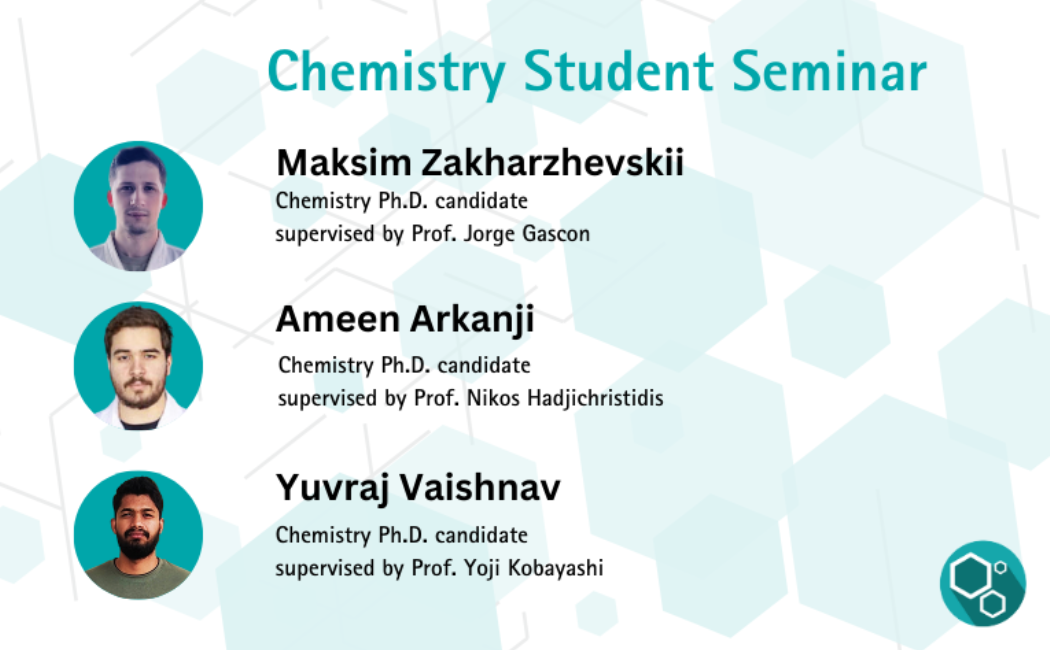
Abstract:
Photocatalytic hydrogen evolution presents a promising avenue for hydrogen production, necessitating the development of efficient systems. While traditional semiconductors have limitations, advanced materials such as Titanium-based Metal-Organic Frameworks (MOFs) show potential for enhanced performance. The introduction of an amino group in the ligand is a promising strategy for further increasing catalytic activity. However, research in this area remains limited due to challenges in Titanium MOF production caused by the high reactivity of titanium precursors, leading to the formation of amorphous materials. In this study, we synthesized and characterized two isoreticular MOFs, representing ideal candidates for investigating the impact of amino group positioning on the photocatalytic properties of MOFs. Our findings highlight the significance of hydrogen bonding between the amino group and the titanium cluster as a crucial factor in achieving materials with high catalytic activity.
Biography:
Maksim obtained his bachelor's degree from Saint Petersburg State University in 2018 and his master’s degree from ITMO University, Russia, in 2020. He is currently a third-year PhD student under the supervision of Jorge Gascon at the KAUST Catalysis Center. His PhD focuses on the synthesis and characterization of metal-organic frameworks for application in photocatalysis.
Abstract:
Polylactides (PLAs) are thermoplastic materials known for their wide range of applications. Moreover, the equimolar mixtures of poly(L-Lactide) (PLLA) and poly(D-Lactide) (PDLA) can form stereocomplexes (SCs), which leads to the formation of new non-covalent complex macromolecular architectures. This presentation will include the synthesis and characterization of non-covalent triblock terpolymers of polystyrene, stereocomplex PLA, and poly(2-vinylpyridine) (PS-b-scPLA-b-P2VP), as well as multiple star block copolymers of polyisoprene and PLA (PI-b-PLA)n, where n refers to the number of arms (n = 3, 4, and 6). Well-defined ω-hydroxy-PS, P2VP, and star-architecture PI were synthesized by “living” anionic polymerization high-vacuum techniques. The resulting PS-OH, P2VP-OH, and (PI-OH)n were used as macroinitiators for the ring-opening polymerization (ROP) of DLA or LLA with Sn(Oct)2 as a catalyst to afford PS-b-PDLA, P2VP-b-PLLA, and (PI-b-PDLA)n. SC formation was achieved by mixing of equimolar amounts of complementary PLAs segments, followed by precipitation into n-hexane. The molecular characteristics of the resulting block copolymers (BCPs) were determined by 1H nuclear magnetic resonance (NMR), size exclusion chromatography (SEC), and Fourier-transform infrared (FTIR) spectroscopy. The formation of stereocomplexes and the effect of molecular weight variation of PLA blocks on the resulting polymers, were investigated by differential scanning calorimetry (DSC), X-ray powder diffraction (XRD), and circular dichroism (CD) spectroscopies.
Abstract:
Entropy has a significant role in catalysis, and many efforts have been made to define the reaction mechanism of high-entropy molecular species. The entropic effect in terms of catalysis is rarely investigated due to the complexity of the multi-component system. Here we have synthesized the first high-entropy lanthanide oxyhydrides (La0.2Ce0.2Pr0.2Sm0.2Y0.2)H3-2xOx and (La0.2Ce0.2Pr0.2Nd0.2Y0.2)H3-2xOx which has allowed understanding the structural change in High entropy oxyhydride (HEH3-2xOx) compared to single element lanthanide oxyhydride, SmH3-2xOx. Our primary focus in this study is to characterize the multiatomic oxyhydride material, as this will contribute to a better understanding of its chemical and diffusion properties. Such mixed anion species with high entropy effect demonstrate the high H- diffusion which is very crucial regarding applications that involve catalysis. In addition, it shows a very high catalytic activity towards NH3 synthesis.
Bio:
Yuvraj, presently in his third year of doctoral studies, is being mentored by Yoji Kobayashi at KAUST. He completed his Integrated BS-MS program in 2021 at the Indian Institute of Science Education and Research. His research is centered around the characterization of high-entropy materials to know their properties towards suitable application.
Chemistry Ph.D. candidate supervised by Prof. Jorge Gascon
Chemistry Ph.D. candidate supervised by Prof. Nikos Hadjichristidis
Chemistry Ph.D. candidate supervised by Prof. Yoji Kobayashi